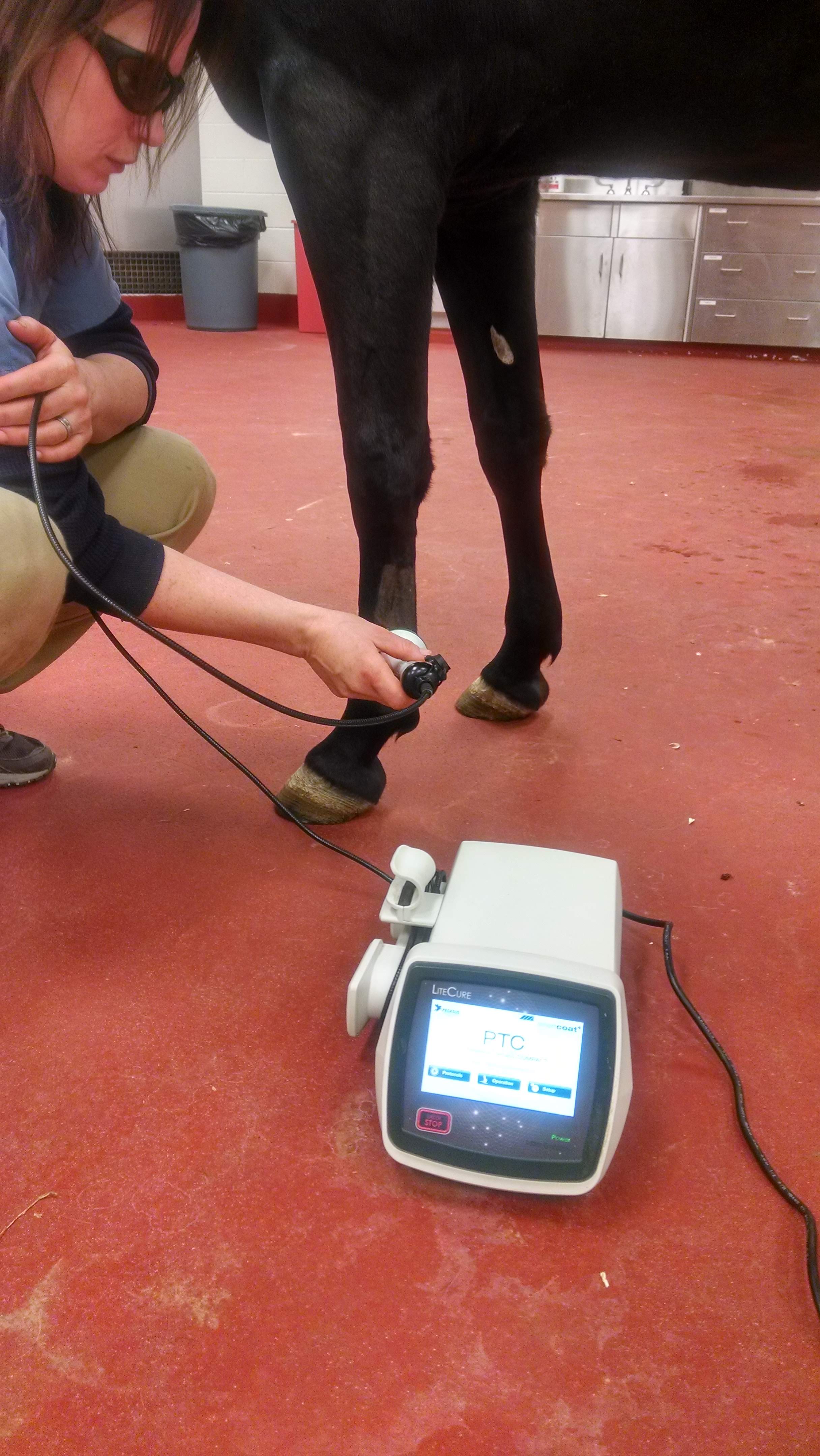Equine Therapy Programs: Transforming Lives One Trip each time
Equine Therapy Programs: Transforming Lives One Trip each time
Blog Article
Just How Laser Treatment in Horse Treatment Is Reinventing Vet Look After Equines
Laser therapy has actually arised as a transformative approach in equine vet care, supplying a non-invasive option that expedites healing and improves total health and wellness. Leveraging specific light wavelengths, this cutting-edge therapy stimulates mobile regeneration, reduces inflammation, and mitigates discomfort. Its efficiency expands from musculoskeletal injuries to chronic conditions like osteoarthritis, considerably enhancing flexibility and life top quality for steeds. The transportability and versatility of laser treatment gadgets additionally highlight their expanding necessity amongst vets. As we explore the elaborate auto mechanics and real-world successes, the extensive effect on equine medical techniques comes to be significantly noticeable.

Understanding Laser Therapy
Comprehending laser treatment is important for appreciating its role in equine therapy. Laser therapy, likewise understood as photobiomodulation, includes the application of details wavelengths of light to tissues, which can cause various biological results. This healing method utilizes the power of light power to pass through the skin and underlying cells, stimulating cellular procedures and improving cells fixing.
The innovation behind laser therapy is based in the concept of photochemistry, where photons are absorbed by chromophores within cells, resulting in raised ATP manufacturing and modulation of reactive oxygen varieties. This, consequently, promotes cellular expansion, lowers inflammation, and increases healing. Veterinary practitioners make use of different sorts of lasers, including low-level lasers (LLLT) and high-power Course IV lasers, relying on the specific healing objectives and the nature of the equine problem being treated.
Various laser wavelengths and power setups are carefully picked to target various tissue depths and attain wanted scientific outcomes. Safety methods are critical, as inappropriate usage can result in thermal damages or suboptimal restorative impacts. Therefore, a detailed understanding of laser treatment's devices and applications is vital for its reliable implementation in equine vet technique.
Benefits for Horse Health And Wellness
The myriad benefits of laser therapy for equine wellness include boosted healing, discomfort reduction, and improved flexibility. This sophisticated treatment method leverages specific wavelengths of light to pass through tissues, promoting mobile feature and promoting fast cells repair service. The non-invasive nature of laser treatment ensures minimal anxiety and discomfort for the horse, promoting a smoother healing process.

By lowering swelling and pain, and improving tissue repair, laser therapy assists in restoring joint function and muscle mass versatility. Hence, laser therapy stands as a transformative tool in modern-day equine vet treatment.
Common Conditions Dealt With
Laser treatment has actually arised as a versatile therapy choice for a variety of typical equine problems. Furthermore, laser treatment is effective for conditions like osteoarthritis, where it helps mitigate joint inflammation and advertise tissue fixing.
Wound monitoring is another area where laser therapy has actually revealed significant pledge. Chronic wounds or slow-healing ulcers can be especially tough in steeds, however laser therapy enhances cellular regeneration and enhances blood circulation, thus expediting the recovery process. Furthermore, laser therapies have actually been effectively utilized in managing unguis problems such as laminitis and abscesses, reducing discomfort and advertising faster healing.
Horse athletes usually experience performance-related problems like muscle mass discomfort and stress and anxiety cracks. Laser treatment aids in minimizing muscular resource tissue fatigue and accelerates the recovery of micro-injuries, thus making sure that horses go back to come to a head performance extra promptly. By attending to these diverse problems, laser treatment is changing the landscape of veterinary treatment, supplying a non-invasive, effective choice to conventional treatments.
Modern Technology Behind Laser Therapy

Laser tools used in veterinary medicine usually make use of low-level laser therapy (LLLT) or chilly laser treatment. Unlike high-powered surgical lasers, these devices run at reduced power degrees, optimizing therapeutic benefits while lessening thermal damage. The energy from the laser light promotes adenosine triphosphate (ATP) production, enhances mobile metabolism, and speeds up cells repair work processes.
Modern laser treatment devices for equine treatment is designed with flexible setups to provide to the details demands of various tissues and problems. In addition, developments in laser technology have actually led to the growth of mobile, portable gadgets, making it simpler for vets to give treatment in a selection of setups, from clinics to stables.
Success Stories and Study
Showcasing the substantial advantages of laser treatment, numerous success stories and study brighten its transformative influence on equine wellness. One such situation involves a pedigreed racehorse struggling with chronic look at more info tendonitis. Traditional treatments produced minimal improvement, however after incorporating laser treatment right into the program, the equine exhibited significant decreases in swelling and discomfort within weeks, eventually going back to competitive auto racing.
One more engaging example features a dressage equine diagnosed with extreme pain in the back, restricting its performance. A veterinary group utilized low-level laser treatment (LLLT) to target the swollen areas, causing marked improvement in flexibility and a significant reduction click in pain. Over numerous sessions, the steed restored its peak form, showcasing the effectiveness of laser treatment in resolving musculoskeletal concerns.
Additionally, a research study carried out at a leading equine center taken a look at 50 horses with different soft tissue injuries treated with laser treatment. The results stood out: 85% of the equines showed increased healing times and boosted movement. These cases emphasize the flexibility and efficiency of laser therapy in equine medication, supplying a non-invasive, scientifically-backed approach to enhancing healing and efficiency in steeds.
Final Thought
Laser treatment is revolutionizing equine vet care by supplying a non-invasive therapy that speeds up recovery, reduces swelling, and eases discomfort. With its efficiency in dealing with a range of conditions, from bone and joint injuries to persistent ailments like osteo arthritis, this technology significantly enhances equine wellness and movement. The transportability and adaptability of laser treatment additionally underscore its transformative effect on vet methods, solidifying its function as an essential tool in modern-day equine health care.
Report this page